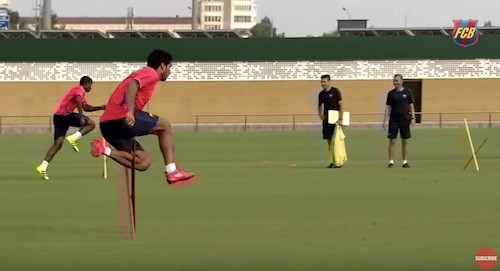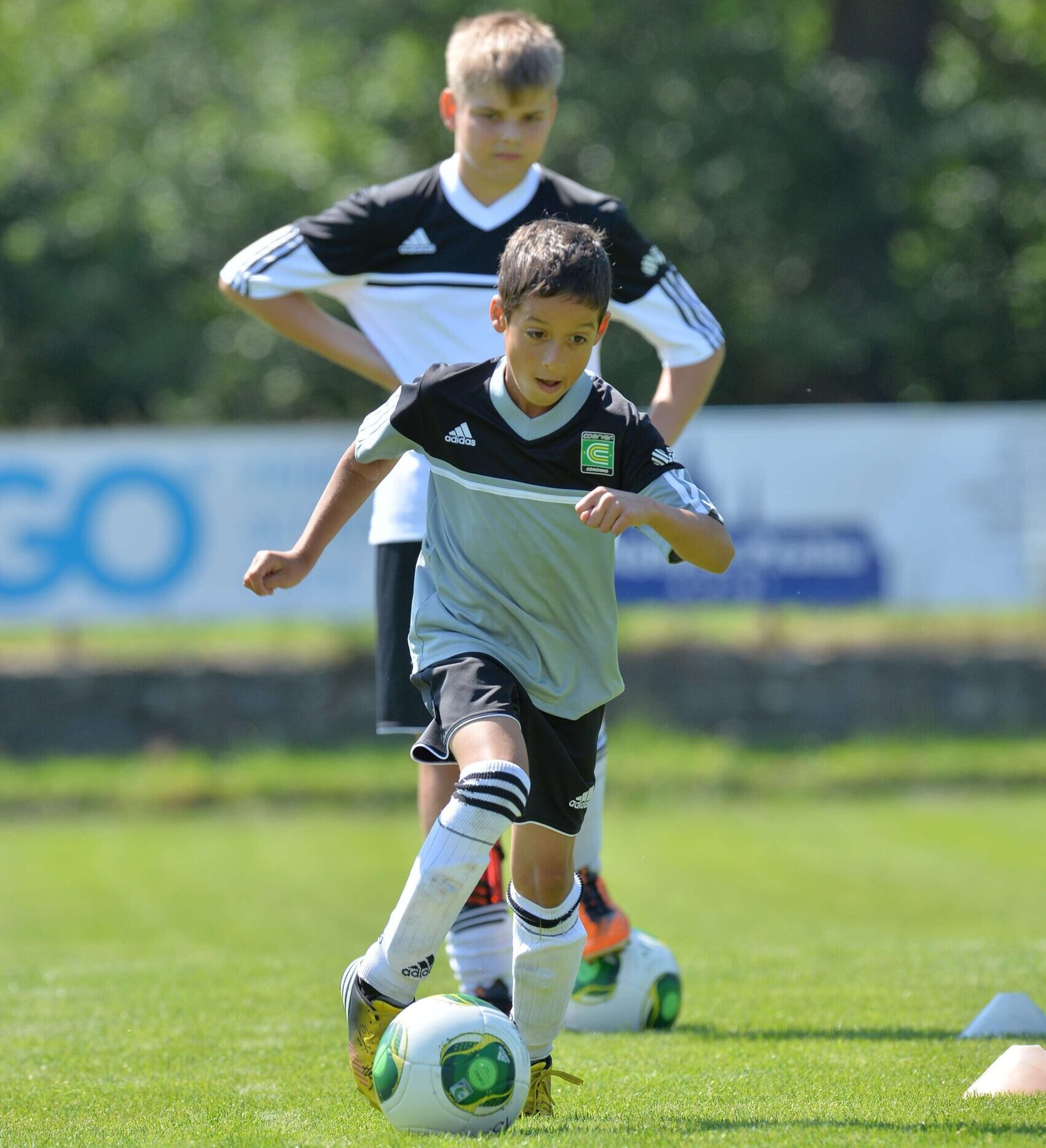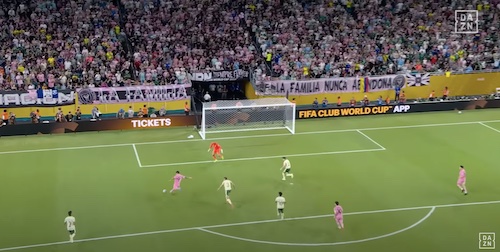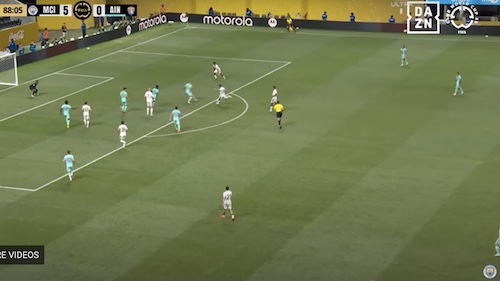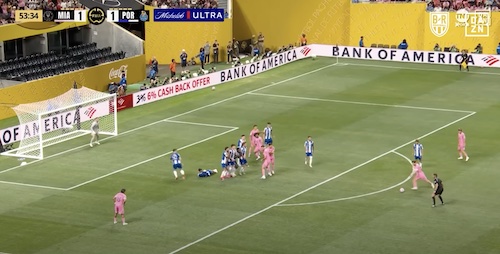What does the word sequence have to do with soccer? I thought soccer was a fluid game, without set plays and stops and starts. Sequence: The following of one thing after another; succession. An order of succession; an arrangement. That’s the definition, but how does it apply to soccer?
Image credit to FC Barcelona for the above picture.
What’s at the core of soccer / football training sequences: passing patterns. And this is really the style of soccer that teams like Barcelona play. It’s the famous Tiki Taka style of soccer that Barcelona originated. These passing patterns and possession of the ball are made up of sequences. Playing the ball and getting it back, always wanting the ball. Try to play the game like you’re always going to have a role to play, always be needed, always wanting the ball.
Instead of just juggling the soccer ball in a standing position, see if you can juggle the ball two or three times high into the air, control the ball, and then dribble away for ten yards. Juggle the ball while jogging and then cut to the side and make a cross. Then juggle the ball with teammates like you’re passing it on the ground.
Instead of just smacking the ball against the wall, see if you can strike the ball against the wall, then go to the ball and control it to the right side or left, and then do one dribbling move before dribbling away at a faster pace for five yards with your right or left foot only and then hit the ball against the wall again. Becoming a good soccer ball is about doing things in progression. And from easier to harder. So it’s mastering a skill on your own and then doing it against a defender. And then it’s at a faster pace.
Watch this soccer drill by Barcelona, where the players work on a number of different soccer skills within one drill – with obstacles to jump over sometimes. It’s soccer training in sequences.
The soccer drill doesn’t have to be as elaborate as this Barcelona drill. And you don’t need that many players working within the drill. Plus, this is something you can work on individually. The key is just adding different skills together and then building off of them. That’s the key thing to do in soccer training sequences – which in many ways is similar to soccer patterns of play. Every top level soccer team works on sequences of play and patterns of play. It’s about triangles and support from up high in the attack, at the wings and then in the back. Players have to move and make runs at the right time to offer support and keep the sequences of passes going.
The idea is to train for soccer in sequences or a series of skills since in a game you’re never going to stand still and juggle or calmly knock the ball against the wall without any pressure. In a game, you’re constantly doing a series of different moves or skills while you’re under pressure from a defender. So it makes sense to try to duplicate this in your practices and training sessions.
First off, you’ll need to perfect each skill without pressure or without adding additional skills to the drill. So yeah you’ll need to perfect juggling and striking the ball with both feet without pressure.
But once you’ve got these soccer skills to a reasonable level, don’t waste time in doing the simple stuff anymore but start challenging yourself even more. Make the ball do what you want to do, not the other way around. And this means setting up a sequence of skills you need to accomplish in your drill. Try to add four or five different skills to each sequence – juggling, dribbling, passing, turning, controlling the ball. These are all skills that aren’t separated from one another when you’re playing in a real game. The sequences also help with your overall fitness level.
For example, try kicking the ball high up into the air, controlling the ball to one side, dribble a few yards and do a step over or a feint with your shoulder, and then strike the ball against the wall with your instep. But you’re not done yet, once you strike the ball you have to follow up your shot. In a sense, these sequence drills keep you on your toes and alert to the next play.
When you see a player score a goal, it’s rare that the goal comes from a standing position unless it’s off a corner kick and they’re just in the right place at the right time. More often than not, a series of things have to happen before a soccer player scores a goal. They might control the ball, make a pass, get the ball back, control the ball again, beat a player or cut the ball one direction, and then strike the ball into the back of the net. And this is all while they’re under pressure from the opposing team.
When you’re on the soccer pitch, imagine you’re playing in the English Premier league for Manchester United at the Theatre of Dreams, with 60,000 fans, and a long ball is played into you from Rio Ferdinand. Yes, Alex Ferguson is on the sidelines chomping his gum as he looks on. You control the ball on your chest, fake with your shoulder like you’re going to the right with your left foot, but instead take the ball with your right foot the other way, play a give and go with Wayne Rooney, and strike the ball low and to the corner of the goal and score.
That’s a nice sequence of events and skills.
Juggling Skills from Xavi, Iniesta and Busquets
Xavi Hernández, Andrés Iniesta and Sergio Busquets were warming up for a training session earlier this year at the Ciutat Esportiva. They decided to see how long they could keep the ball in the air by passing the ball amongst themselves, but touching the ball with both feet each time. The result was captured on video and makes for incredible viewing.
Trying out ball tricks like this is nothing unusual in football. It’s the kind of thing you’ll see people doing in playgrounds all around the world. But rarely, if ever, will you see the exercise performed so exquisitely as Xavi, Iniesta and Sergio do here. Their level of ball control is simply staggering.
How long will they be able to keep going? And what about you and your friends? Let’s see how you get on!











